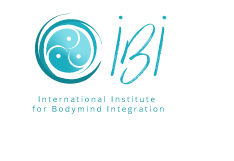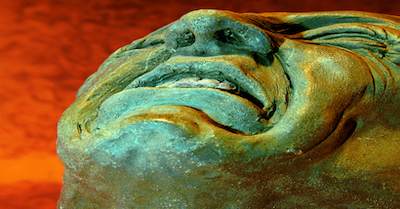“It is clear that a prophylaxis of neuroses is out of the question unless it is prepared theoretically; in short, that the study of the dynamic and economic conditions of human structures is its most important prerequisite. “
–Wilhelm Reich
Every counselor / therapist encounters clients for whom it is extremely difficult to express their problems and feelings. They cannot, as it were, distance themselves from themselves; don’t look at themselves. It then seems as if they have grown into their problems, as if the complaints, the problems have become part of their personality.
Wilhelm Reich – the psychoanalytic genius of character analysis
As a young clinician in the 1920s, Hungarian-Austrian psychiatrist Wilhelm Reich, a student of Sigmund Freud, was also confronted with this. Freud had shown how unconscious behavioral and thought patterns arise from past experiences, especially our earliest childhood. Freud developed the “free association” technique that was intended to clarify these experiences.
However, given the demonstrated validity of many of its elements, psychoanalysis did not appear to work as well in many people as people initially thought. The way in which some presented their problems appeared to go hand in hand with certain patterns to resist interpretations, which gave rise to the concept of character. It was especially Wilhelm Reich who brilliantly extended the psychoanalytic focus of resistance at the time to the more inclusive technique of character analysis.
In 1925 he published a first study on this issue: The impulsive character (borderline personality in contemporary terms), followed in 1933 by the thick book Character Analysis, with which he gains recognition in psychoanalytic circles to this day. Reich made body language the core of his treatment. He noted that the character patterns extended to a person’s physical appearance and build. Reich managed to associate people’s physical appearance and non-verbal body language with their thoughts and attitudes, with their character structure.
When there was no progress, Reich had his clients move certain seemingly fixed areas, such as the jaw, to loosen things up. Often such a flow of feelings and memories started and therapy got back on track. The ingrained attitudes and thought patterns function as an “armor” that simultaneously exists as chronic muscular spasms.
Character Analysis, a body-mind approach to disease and prevention
Body and mind came together for Reich when character analysis opened the way to a psycho-corporal (body-mind) approach to disease and its prevention. Today we know – and this is confirmed by neuroscience – that a character structure is linked to a developmental neuropsychological trauma. Injuries around the birth or first months of life will leave inevitable physical and mental traces in the adult. Traumatic experiences in every critical development phase will register as typical traits in the personality and the body.
He described this new body-oriented approach for psychoanalysis in the book The Function of the Orgasm (Die function des Orgasmus) which was published in 1927, followed in 1942 by a more extensive second edition. Reich’s view is that posture and movement, and the ability to experience emotions are two sides of the same coin. Both body posture and emotional balance are partly determined by the tension of muscles (and connective tissues). Anyone who is tense does not feel anything (other than tension). The basic needs that are not met during personality development are expressed in the therapeutic relationship with the help of the therapist. In the therapeutic event, the “transfer phenomenon” is used in which, for example, the client projects an ideal father into the therapist, or someone else rejects the mother. Today in Bodymind Integration and Body Psychotherapy we usually use “placeholders” in the room in the form of objects, so that the role of the ideal father is differentiated from the one of the therapist. The therapist cannot become the provider of the unfulfilled needs of the client.
Post-Reichian Character Analysis – Alexander Lowen and John Pierrakos
A therapeutic approach based on Reich’s insights provides an efficient treatment, thanks to a simultaneous approach to body, emotions and thoughts. After Reich, it was mainly Alexander Lowen and John Pierrakos, two of Reich’s disciples, who advanced the concept of character in thinking about change. From extensive natural and clinical observation, they created a character typology encompassing the physical, psychological, family and social aspects. In the bioenergetic analytical tradition, a distinction is made between 5 dominant character structures (some go up to 9). Lowen once defined character in the following manner:
… character structure is not a conglomeration of injuries and defenses which can be analyzed one by one, nor is it a series of scattered muscular tensions-a tense neck, a rigid jaw, contracted shoulders, etc.– which block the flow of excitation and feeling in the body. True, each tense muscle or muscle group is the result of traumatic experiences which block the expression of feeling. But the character structure is an organized system of defenses aimed to promote the survival and security of the individual. And these defenses are integrated and coordinated to promote the maximum security which the individual feels necessary and yet provide an opportunity for the individual to try to find some fulfillment in life. It was not built in a day but over a period of years–six to be exact–during which the child strove to find some positive meaning in its life. It is a walled city or a fortress depending on the degree of fear.’ It cannot be analyzed away, nor can it be demolished by force. It is part of the individual’s nature, second nature to be exact, and therefore beyond the will of the individual to change.
Alexander Lowen, Newsletter of The International Institute for Bioenergetic Analysis Volume 18, No 2
Jack Painter, PhD. elaborated in a very original way on Reich’s work, developing the Natural Energetic Cycle:
“Reich sees the energy cycle beginning with tension, followed by charge, discharge and relaxation. Yet it seems there is also a precondition of tension, a state of emptiness which makes any fresh movement and its completion possible. If I cannot find the condition in myself where I am neither acting or reacting, I cannot develop completely new energy. I may, of course, carry contractions with me because of what happened previously, and respond to new stimuli with further contractions, but these reactions or actions originate, mostly, in previous patterns, from what is left-over, from past energetic cycles. Here we need instead to speak of a kind of stillness and openness, an initial repose, before any movement.
This state does not involve acting or preparing to act. It is more a shared condition, a state or space, which carries no tension, and makes me available to someone prior to touching them physically or emotionally. We need in some way to be in the same space before we can begin assimilating or reacting to each others energetic fields. We so often view our world in the language of causes and effects, actions and reactions that we may overlook this phenomenon of simply “being together,” of occupying the same space. This is a fundamental phenomenon that makes the spontaneous quality of our initial contractions and subsequent actions, reactions, interactions, even possible. And when this initial opening to others is not, at least in part, available, we are simply playing out some previously imitated energetic exchange.
When I speak of inactivity being the shared condition of our energetic undertakings, I do not mean that we are identifying with any particular content, for example another persons feelings or thoughts, but only that there is some recognition of, some respect for the individual in a mutually shared space.
We are open, but without anticipated agreement or disagreement. When I begin working with a client, I may be capable and willing to begin with breath work, with the energetic cycle, but the client, it may turn out, does not yet wish to begin, to embark on such a new adventure. And if I am centered within myself, though I am available, I am not anticipating. Repose is a precondition of tension and charging, without carrying with it any impetus toward movement.
There is, of course, some bio-electric activity. Even in a state of homeostasis, there are small internal movements, as in an amoeba when at rest. But this is not the beginning of directed impulse, and when we are functioning optimally, is not a product of past or anticipated patterns of movement. Repose is a kind of equilibrium with our environment, a condition where we give liberty to ourselves, and to those who occupy the same space with us, to be at rest.
Often, of course, we do not begin our interactions with this balance. We may have to play out energies left-over from previous cycles of interactions with others before we can actually share such a space, and begin a truly fresh cycle together, before we can find the respect for each other which makes subsequent energetic sharing possible.”
Unpublished
Reichian therapy can refer to several schools of thought and therapeutic techniques whose common touchstone is their origins in the work of psychoanalyst Wilhelm Reich (1897–1957). Some examples are:
- Bioenergetic analysis, which combines psychological analysis, active work with the body and relational therapeutic work.
- Body psychotherapy, which addresses the body and the mind as a whole with emphasis on the reciprocal relationships within body and mind.
- Neo-Reichian massage, whose practitioners attempt to locate and dissolve body armoring (also called “holding patterns”).
- Vegetotherapy, a form of psychotherapy that involves the physical manifestations of emotions.
- Core Strokes : In this method Dirk Marivoet is elaborating on Jack Painter’s Natural Energetic Cycle (a further development of Reich’s orgasm formula of tension-charge-discharge-relaxation), combining it with the insights of John Pierrakos, Alexander Lowen and Al Pesso, major pioneers in the world of Body Psychotherapy) and Postural Integration®.
Did you like this article? Share it in:




